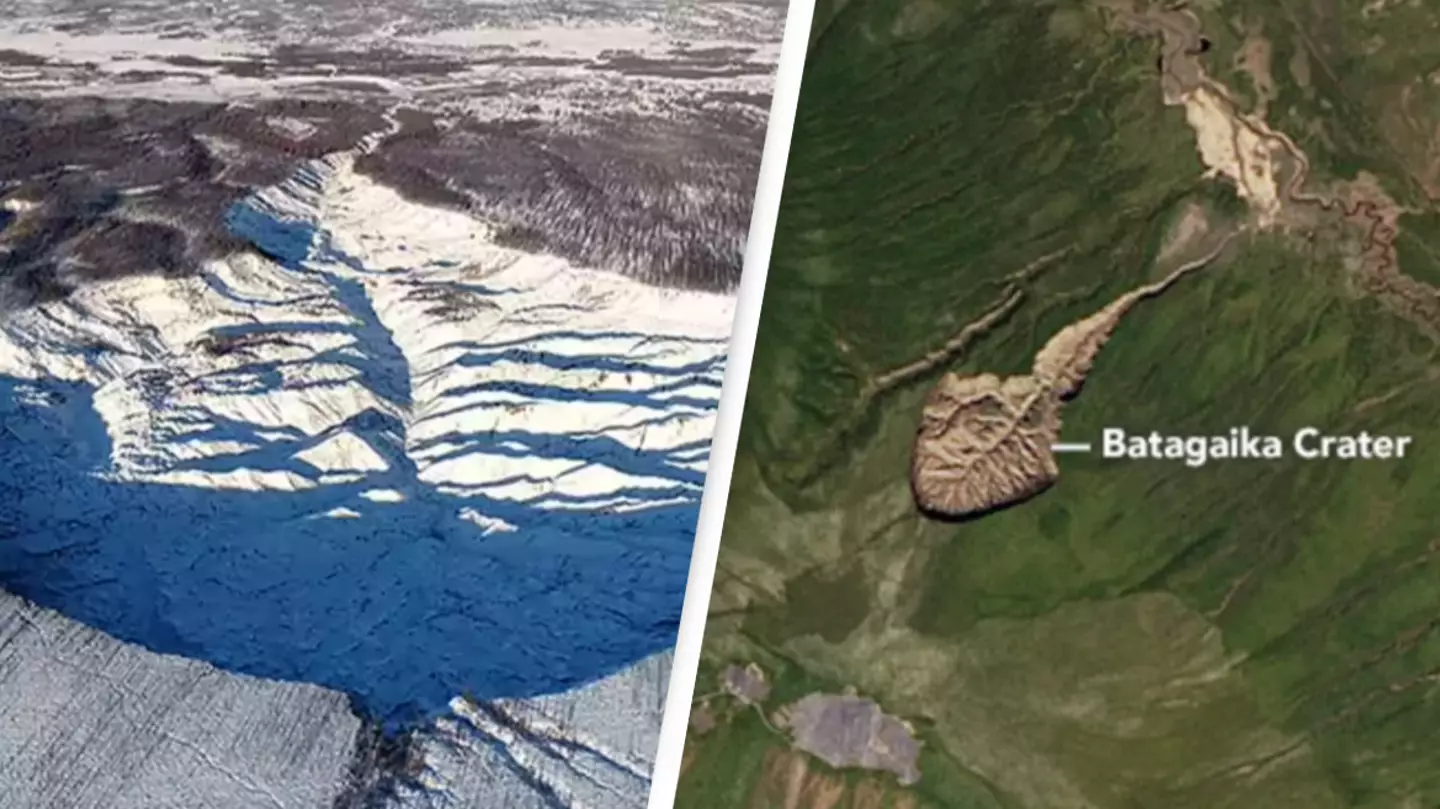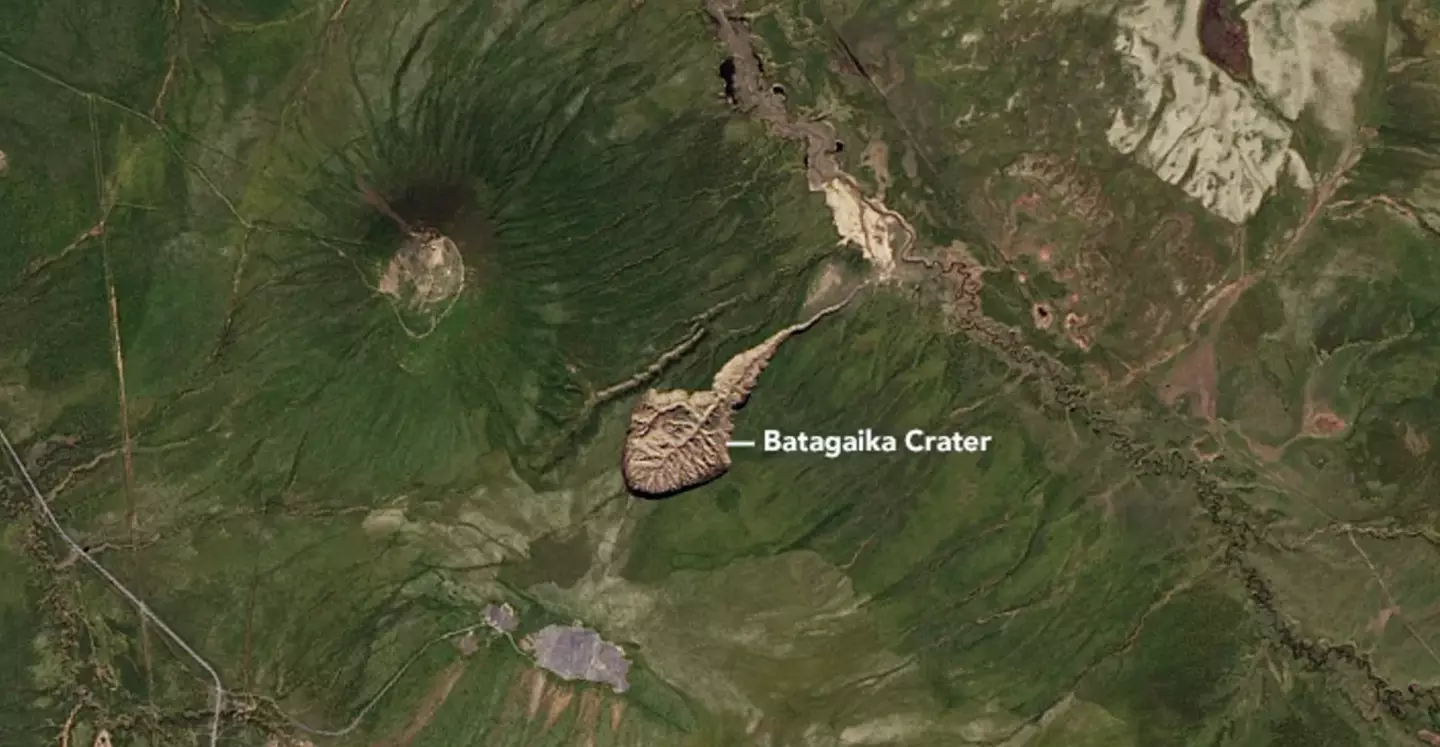
A giant megaslump in Siberia could prove beneficial to the future of science.
Known as the 'Gateway to Hell', the Batagay megaslump is the biggest permafrost crater in the world and it's getting bigger as each year goes by.
The crater formed in the 1960s after its permafrost began to thaw, but it wasn't until 1991 that researchers came across the remote pit with the help of satellite images.

Advert
As to what has caused the permafrost to the thaw, it'll probably come as no surprise to you that it's all climate change related.
Permafrost like the one at Batagay is described as 'frozen dirt underground, which by definition you often can't see unless it's been exposed somehow', Roger Michaelides, a geophysicist at Washington University in St. Louis, told Business Insider.
Apparently there are thousands of slumps like these across the Artic, but it's the sheer size of Batagay crater that earned itself the title of a 'megaslump'.
Studies have shown that the slump grows a concerning one million cubic meters every year and, as of last year, the 'Gateway to Hell' stretched to 3,250 feet (990m) wide.

Undeniably, the thawing that's affecting many parts of the globe isn't a good thing as the process ultimately releases gases like carbon dioxide and methane, but scientists are hopeful that the Batagay megaslump could help them learn about such craters.
Michaelides said: "I think there is a lot we can learn from Batagaika, not only in terms of understanding how Batagaika will evolve with time, but also how similar features might develop and evolve over the Arctic.
"Even if they're a tenth or a hundredth the size of Batagaika, the physics is fundamentally the same."
Professor Julian Murton, a geologist at the University of Sussex, has echoed similar sentiments previously and said that the megaslump will 'provide a view to what has happened in the past and what is likely to happen in the future'.
This won't stop Batagay releasing around 4,000 to 5,000 tons of carbon each year, though.
In fact, it's predicted that the giant crater could emit 'as much planet-warming gases as a large industrial nation by 2100' if we don't start making climate change friendly changes as soon as possible.
Worryingly, as well as releasing greenhouse gases, thawing permafrost could potentially engulf the loosened ground around it. This is a huge concern for some parts of Russia as 65 percent of the country is made up of permafrost.
Topics: Climate Change, Environment, Russia, Science, News, World News